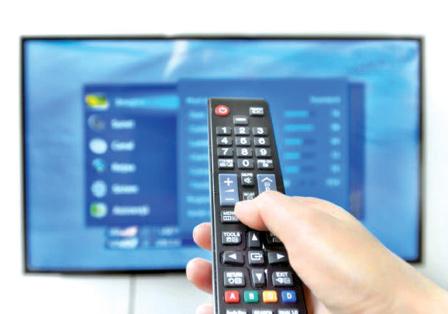You are here
The critical importance of networks
By Jean-Claude Elias - Jul 28,2016 - Last updated at Jul 28,2016
“I’m on the network.” “There’s no network today.” “We’re setting up a new internal network in our office.” “I enjoy social networking.” These apparently simple, commonly used expressions, where the word network is recurrent, belie its importance and its far-reaching impact on our world, on our current life and on the future.
The fact is that the word network is not to be taken lightly, and most of us only realise but a tiny part of what it actually represents. Another important fact is that the network concept extends far beyond computer networks and the Internet, the ones we first think of. From the gigantic electric power grids to the 100 billion neurons in our brain, from schools of fish to flocks of birds, everything is network, be it man made or in nature.
Relationships between people also function on the network principle. We talk of “network of friends, or acquaintances”. The power, the inherent property of networks is that they do not operate and link the “nodes” that make their web in a linear way but according to very complex structures that still have not been completely studied and analysed but that are significantly more powerful and faster that linear connections. Say you have 100 friends (in real life or on Facebook… it works in the same manner). To connect to friend #67 you do not have necessarily to go through 66 of them before reaching him or her; understandably. There are shorter paths across the network. We cannot always describe it but we know it and feel it instinctively.
To remind us of one of networking most stunning effects is the famous “six degrees of separation” concept that says that for any person on Earth to connect to any other out of the 7 billion alive, you have to go through a maximum of six persons. It’s the simple but incredibly efficient “a friend of a friend” system.
An example. He may not know it but the editor of this article is connected to American actor Harrison Ford through just four steps. I met and interviewed English musician Sting a few years ago (for The Jordan Times). Sting knows Harrison Ford, and of course I know my editor. Et voilà!
The six degrees of separation theory was set out by Hungarian writer Frigyes Karinthy circa 1930. Whereas it has not been proven mathematically, experience has always shown that it works. It is a perfect illustration of the network notion.
More recently American scientists Duncan Watts and Steven Strogatz have been working on better understanding the notion. Observation of the behaviour of birds or fish in large groups shows that they move together in perfect synchronisation and communicate through advanced, instinctive networking connectivity. The show is usually nothing less than spectacular.
Although the concept is now more than a hundred years old, new research by Watts, Strogatz and others may have an impact that will simply change our world. It is like a new science that is emerging and which effects are yet to be seen but are not to be underestimated in any way.
The Internet itself is already in a new phase of networking. The current protocol structure referenced as IPv4 is showing its limits in terms of possible addresses (i.e. number of devices connected) and the world is moving to IPv6. Whereas the first can manage 4 billion addresses the second will be able to handle a number of addresses equal to 34 followed by 38 zeroes. Even if the number is hard to visualise, this certainly should be enough for a long, long time.
Understanding networks better, in a deeper manner, may shed a new light on the way the human brain functions, how we remember this or why forget that. It may improve the management of large databases and computer programming algorithms and methods. We may also better understand animals’ behaviour.
Next time you add one friend to your Facebook list of friends, remember that this simple, apparently ordinary addition will have a big effect. On the network it will impact on all “mutual” friends.
Related Articles
The readers of this column will forgive me if they find the title of this week’s article somewhat obvious.
So it’s agreed, we’re all connected now and there’s no going back or disconnecting. The term, however, has taken a new dimension with the complexity of the connection, or the interconnection should I say.
The new smart TV I just bought myself is trying to outsmart me.

















